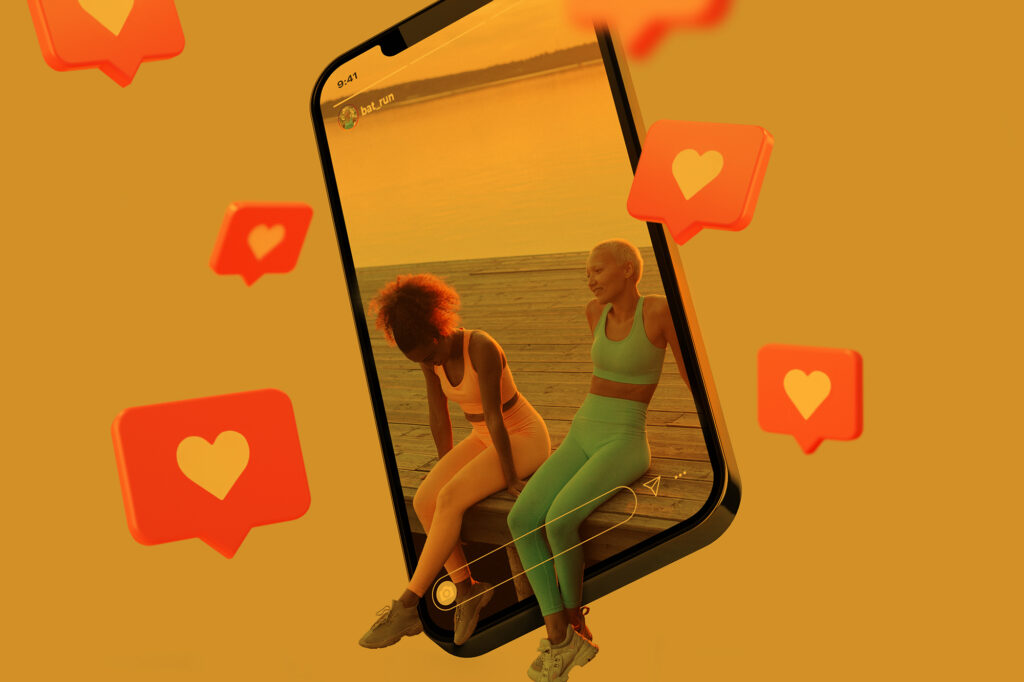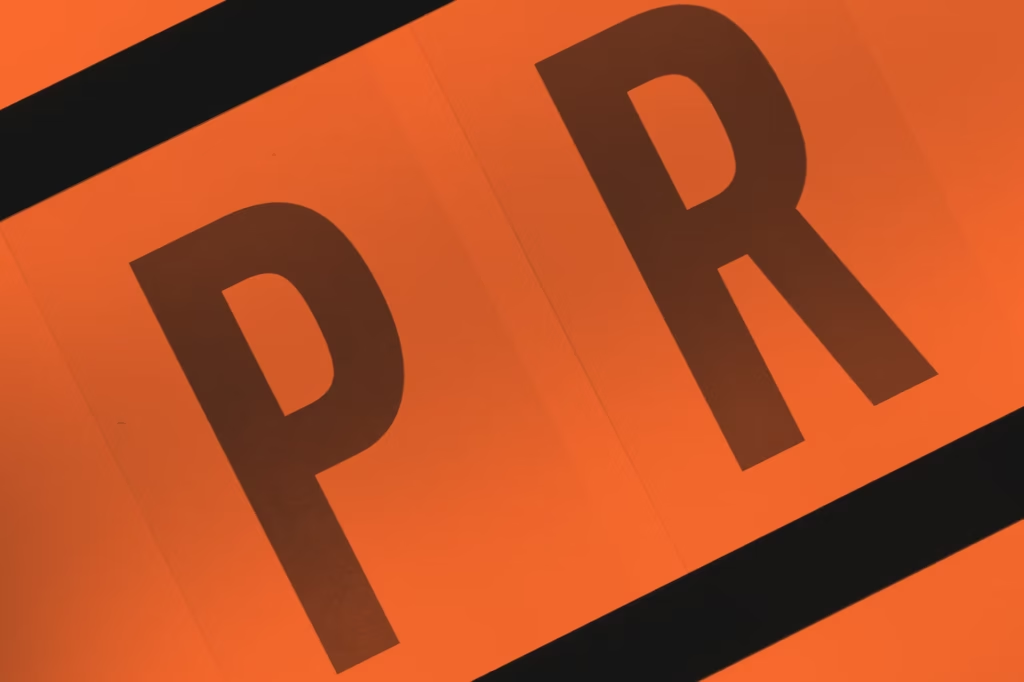Shoppable Content Is the Future of Brand Storytelling—Here’s How to Do It Right

When we scroll through our social media feeds today, we’re not just seeing ads that link to brand websites anymore — we’re seeing actual, current products in posts and videos that can be purchased with just a few clicks, often without even leaving Instagram or Tiktok. Instead of just saving items to a Pinterest wishlist board, we can now buy them in real time. This is the power of shoppable content. It’s a compelling marketing tool that merges editorial storytelling with ecommerce functionality. Even better, it doesn’t have to be overly promotional or brand-diluting. When executed thoughtfully as part of a strategic marketing plan, shoppable content will strengthen the connection between your brand and your audience, fostering a seamless user experience that is both authentic and engaging. This article will dive into the ins and outs of shoppable content: how to do it well, what mistakes to avoid, and how to get started. What Is Shoppable Content—and Why Does It Matter Now? Shoppable content turns blogs, images, videos, and social media posts into real-time sales tools. It refers to any kind of content spotlighting products that enables viewers or readers to purchase those products directly while they interact with the content. Shoppable content meets consumers where they already are: reading, scrolling, and watching. It shortens the path to purchase while keeping trust intact. Ten years ago, you might have seen an ad for a handbag you liked in a magazine. You might have added it to a mental wishlist and then forgotten about it in a few days. Now, imagine seeing a handbag you like in a shortform video on Instagram. You see a brand ambassador showing off the handbag in a stylized videoshoot, highlighting its spacious storage and quality construction. With one click, you’re directed to a checkout page on the very same platform where you stumbled upon the video. The bag is yours before you have a chance to forget you saw it. This kind of shopping experience is more important now than ever. There are millions of products available online, and a small brand can easily get lost in the crowd. Shoppable content is your brand’s chance to stand out. It taps into the modern consumer’s desire for instant gratification: purchasing the exact product you see right when you see it. Best of all, the entire shopping process can take place from the comfort of the customer’s couch. Shoppable content isn’t just about providing a convenient, low-stress form of retail therapy. It’s also an opportunity for a brand to find its audience. Potential customers aren’t going to click on and buy every single product they come across on their feed. They’re much more likely to be interested in products that tell a story, and that hook them through unique, engaging content. Brands that see the most success from shoppable content will not only engineer an effortless pathway from first viewing to final checkout, but also draw customers in with consistent, high-quality storytelling. Formats That Work Shoppable content is a very flexible marketing strategy that can easily be customized based on your brand voice, projected audience, and individual products or services. There are a variety of formats that can host shoppable content, including: Why Shoppable Content Converts Better Than Traditional Ads Shoppable content is truly marketing for the modern age. It supports a 21st Century retail journey. Readers and viewers are already engaged—in fact, they’re just a click away. They’re actively scrolling, browsing, and interacting with content already. Making a purchase in this context is a natural extension of the content engagement experience. Traditional ads have lost their luster in recent years. A generic, static advertisement for a brand as a whole on a billboard, newspaper, or postcard doesn’t hold a candle to the more dynamic possibilities of shoppable social media content. Digital advertisements are better at capturing attention, and also at forming lasting connections. Shoppable content provides value through recommendations, not just sales language. It’s not just a brand’s carefully curated slogan on a piece of paper telling you that you should check them out. You’re also seeing influencer partnerships, real customer reviews, and other forms of user generated content that expand the scope of the brand/consumer relationship. This marketing strategy can start off as a brand posting photos and videos of a few core products, and then take off as these products spark interest and gain traction online, encouraging trendsetters and fans to try them out and post their own content highlighting their feedback. Over time, shoppable content builds brand credibility. The more content out there spotlighting a brand’s products, and the more positive buzz generated by interacting with this content, the more likely consumers are to trust the brand and view it as a worthwhile investment. What Makes Shoppable Content Actually Effective There’s a big difference between link-dumping and creating thoughtful, elevated shoppable content that functions as a high-performing media asset. The difference lies in how the content is created. Here are a few key elements that make for effective shoppable content: Examples of Shoppable Content Done Right (and Why They Work) Example 1: A “10 Things I Pack for Every Trip” list Consider a listicle published in June offering readers an essential packing list for summer trips. 10 categories are outlined, including sunscreen, a travel phone charger, reusable water bottle, sunglasses, packing cubes, and swimwear. Each category naturally links to essential products that readers could take on their own summer getaway. This piece taps into a common experience — getting ready for a fun summer vacation. It provides helpful recommendations for products that readers will actually get use out of – sunscreen to prevent sunburn, packing cubes to organize their belongings, and a water bottle to stay hydrated. Each product has a clear use, and readers will be tempted to purchase these items to enhance their own travel plans. Example 2: A “Get Ready With Me” video Here, an influencer posts a ‘Get Ready With Me’ video doing a full face of makeup using products
Why Earned Media Value Is Broken—and What Brands Should Measure Instead

Earned media value (EMV) assigns a monetary value to the media mentions and press coverage your brand receives. EMV was once considered an essential tool for measuring the impact of a public relations strategy, but it has become a misleading, outdated metric in modern PR. While EMV can look impressive in a wrap-up deck, it often fails to show true brand impact. There are smarter, more actionable metrics brands can measure instead to get a more comprehensive (and accurate) picture of what a PR strategy is doing in practice. Agencies like LaRue are at the forefront of this movement to focus on what actually matters. When it comes to visualizing the impact of PR in action, your brand can do much better than EMV. What Is Earned Media Value—And Where Did It Come From? Earned media is an umbrella term referring to all of the third-party media coverage a brand gets that they don’t pay for themselves. Examples include online product reviews, customer social media posts about brand products or services, magazine or newspaper features, or blog write-ups. Essentially, earned media is all of the digital word-of-mouth marketing your brand receives. Earned media value attempts to calculate the dollar value of all of this unpaid coverage. EMV is computed by estimating the dollar amount of paid advertising it would take to achieve the same level of coverage. This metric has roots in ad value equivalency (AVE), a similar practice used in traditional PR campaigns. AVE estimates the value of earned media by calculating how much it would cost to buy a traditional ad of a size or reach that would achieve the same coverage. As pieces of earned media gain traction online, and media impressions accumulate, they’re often “valued” with AVE by multiplying ad rates. In recent years, AVE has been heavily criticized for failing to capture the true value of media mentions. AVE and EMV alike are all about measuring surface level metrics, such as number of impressions or mentions. They fail to provide a deeper look at how coverage is received, and how it relates to key factors like brand awareness and customer loyalty. The rise of influencer marketing gave EMV new life, but not necessarily new rigor. EMV became a popular metric for measuring the value of influencer marketing campaigns, but it has significant limitations. While an influencer campaign may appear to have a large EMV at a glance, this so-called ‘value’ doesn’t automatically translate into actual sales for the brand in question. An influencer’s product post might go viral for a few days and get hundreds of thousands of views, but fail to increase sales of the product. EMV also fails to offer a nuanced look at the demographics of the audience making up those views, and a consideration of how the campaign fulfilled other kinds of goals such as meaningful engagement or brand recognition. Why Earned Media Value Is a Broken Metric EMV is all about volume over impact. In today’s digital space, volume is easy to overestimate and impact is too important to ignore. EMV often comes up with overinflated numbers based on shaky formulas (i.e. impressions x an arbitrary multiplier). One of its biggest drawbacks is that it completely fails to account for the quality of coverage. It doesn’t differentiate between brand name drops and full features. Further, EMV ignores what really matters: whether anyone remembers, clicks through, or converts. It can easily be overinflated and gamed by sheer volume, not resonance. EMV can measure the height of a piece of media’s coverage, but it simply cannot capture its depth. In the current media landscape, it’s essential to consider the lasting impact of any marketing campaign. The Vanity of Big Numbers A $3M EMV headline doesn’t mean anything if it doesn’t shift behavior. A social media post or media feature could generate flashy metrics over the course of a couple days, contributing to a large EMV. If this valuation doesn’t translate into actual results, however, it’s not actually that valuable to the brand at the end of the day. Before launching any campaign or evaluating any coverage, a brand should set specific goals, such as increasing sales of a certain product, driving traffic to the website, or achieving meaningful audience engagement online. Whether or these goals are met is far more important than what dollar value a questionable formula can generate. What Brands Should Measure Instead Fortunately, there are much better metrics available that can provide a more complete picture of the value of earned media. The metrics that are best for a particular case can vary based on goal and channel, but they are all tied to meaningful outcomes. Consider these tangible, strategic alternatives to EMV: Brand Lift Brand lift is an increase in positive sentiments towards your brand following media coverage. Surveys or social listening can track perception changes. Media mentions should move the needle on how your audience sees you—in a good way. Brand lift can help you visualize just how far the needle moves. Traffic Quality It’s vital to look beyond clicks alone to consider additional factors such as bounce rate, time on site, and pages per visit. A hundred visitors spending less than a few seconds on your site doesn’t compare to twenty visitors spending at least ten minutes getting to know your brand and actually making a purchase. Good press should bring curious, engaged visitors—not just random traffic spikes. Affiliate ROI and Sales Attribution For shoppable or affiliate-driven content, track what actually sells. Paying attention to affiliate links can help you pinpoint exactly what sales can be traced back to which affiliates. This can inform future affiliate marketing efforts. Great press combined with a strong call-to-action generates measurable ROI. Long-Tail Relevance PR isn’t always immediate—it’s about reputation equity over time. Tracking long-term effects of coverage and campaigns should definitely be part of the equation. Coverage can drive value months later (via search, evergreen linkbacks, or referral traffic), and that value can and should be followed as
From Backlash to Bounce-Back: What Smart Brands Get Right About Crisis PR

Now more than ever, the expression “any publicity is good publicity” does not hold true. Any brand knows that today, not all press is good press. Every brand is one headline away from a crisis. Whether it’s an interview gone wrong, an unexpected soundbite, or a well-intentioned social media post that reaches the wrong audience, the backlash is often swift and overwhelming. While it might be impossible to predict the next controversy, you can take steps to prepare your future response. Crisis PR is not just about dealing with a crisis after it’s already unfolded. It’s also about developing a plan for handling potential crises, and working to prevent them from occurring in the first place. This article offers a deep dive into the key principles of crisis PR, a look at real-life crisis PR in action, and how agencies like LaRue can help clients navigate the firestorm. What Is Crisis PR—And Why It’s More Than Damage Control At its core, crisis PR aims to preserve or rebuild a brand’s reputation before, during, or after a crisis has occurred. The goal is to restore a positive public perception of the brand, work to foster renewed trust, and try to repair the customer-brand relationship. That said, crisis PR is about more than just reacting to a disaster or major brand mistake. It’s also about taking a proactive approach by planning for crises before they happen and developing procedures for dealing with them. The stakes today are higher than ever. Between cancel culture, social media, and the 24/7 news cycle, there are more opportunities to make mistakes and have these missteps broadcasted in front of a large-scale audience. A crisis PR agency offers both outside perspective and operational speed when it matters most. Tensions tend to run high within a company during a crisis. Crisis PR agencies come up with solutions from an objective point of view, providing a clear path through the storm to the other side. With focused expertise, crisis PR agencies are also equipped with dedicated resources that can help you navigate challenging situations in a timely manner, one step at a time. The Brands That Got It Right (And Why) There are no shortage of real-life brand crises to point to when highlighting the importance of an experienced crisis PR agency. The brands that tend to endure once the smoke clears are those that handle the crisis with transparency and clarity. Here are two examples of smart brand crisis responses: The Tide Pod Challenge In early 2018, the so-called “Tide Pod Challenge” started to gain popularity on social media, tasking teens with posting themselves placing the detergent pods in their mouths and biting into them. Evidently, Tide had a crisis on its hands- its pods are in no way edible, and viral videos were popping up across platforms encouraging their consumption. In response, Tide partnered with football star Rob Gronkowski to film a public service announcement that made it clear tide pods were not for eating. Tide kept all of their social media posts on the subject brief, focused, and clear: tide pods are for cleaning laundry, not consuming. Their response was quick and multi-pronged. Their CEO released a statement asking family members to talk to their teens and explain that their safety is more important than a moment of viral attention. The Tide social media team also responded to various consumer posts urging them to immediately contact poison control or seek medical attention if they had participated in the challenge. Crock-Pot and This is Us Crock-Pot became an overnight villain after an episode of the popular TV show This is Us aired in January 2018, featuring the death of beloved character Jack Pearson following a house fire started by an old, faulty slow cooker. Across message boards and social media platforms, a discourse rapidly started to spread that Crock-Pots were unsafe and that the appliances should be discarded. At the time, the Crock-Pot brand didn’t have a social media presence. To address rampant criticism of their brand, they created a social media account under the handle ‘CrockPotCares’. They posted a message that directly referenced the TV show, honoring the character. At the same time, they also highlighted their decades-long track record in appliance safety and assured customers that this was a highly unlikely, fictional event in a show. In the days after the episode aired, the Crock-Pot social media team continued to respond to posts expressing concern or fear about the appliance in relation to the show by acknowledging their feelings and providing reassurance that Crock-Pots are in fact safe. In addition, Dan Fogelman, the creator of This is Us, made a post asking viewers not to blame Crock-Pot. Further, the brand partnered with the actor who played Jack Pearson, Milo Ventimiglia, to create a Super Bowl ad in favor of Crock-Pot, featuring the tagline ‘Crock-Pot is Innocent”. Both of these examples represent an interesting type of crisis that is becoming more common in an increasingly digital age. In both cases, the brand itself didn’t do anything to cause public outcry. Their products were used or featured in an unintended way through media, and this resulted in unintended consequences. Both of these brands were able to handle an unexpected crisis well, and came out the other side without suffering an overwhelming hit to their reputations. Certain core aspects of their PR response helped support this outcome, including: What They Did Right Both Tide and Crock-Pot controlled the narrative without sounding defensive. This is especially impressive considering these are crises they could not have anticipated. Instead of blaming the teenagers who started the challenge or the show writers who created the episode, each brand turned their attention to the crisis at hand and prioritized safety over blame. Both brands used existing values to guide the response, emphasizing consumer protection. Additionally, their social media teams both implemented a cohesive communication strategy that went beyond the initial post addressing the crisis, continuing to follow-up by replying to consumer posts
The Best Soundbites Aren’t Scripted—They’re Trained

In the current digital landscape, it’s essential to make every media exposure opportunity your brand gets count. Of course, you don’t just want your brand to stand out—you want to stand out for the right reasons. With a little extra preparation, you’ll be better equipped to handle any interview or media interaction that comes your way. The difference between a headline-making interview and a PR flop often comes down to how well someone is media trained—not how “natural” they are. Media training isn’t just about avoiding saying the wrong thing—it’s about learning how to say the right things in a clear, concise way. This article will cover what effective media training really looks like, and why it’s indispensable in today’s attention economy. What Is Media Training—And Why It Matters More Than Ever When your favorite celebrity handles an uncomfortable question with grace or deftly sidesteps a controversial topic in an interview, you’ll likely see media training mentioned in the comment section. Media training, however, is not just for your favorite actors or musicians. It’s a crucial tool for brands and working professionals too. Media training is not about memorizing a script. Instead, it’s about knowing how to communicate with clarity, confidence, and composure. These are versatile skills that can be applied across a variety of situations. With media training under your belt, you’ll be prepared to tackle any interview, speech, or digital communication that you’re faced with. In a world of soundbites, livestreams, and TikTok callouts, one misstep can go viral. Effective media training helps leaders and spokespeople embody brand values without sounding robotic. Media training is about more than maintaining a running list of talking points or checking off certain boxes in each media appearance. At its core, media training is an exercise in storytelling. The first goal of media training is to help you isolate the messages, values, and storytelling elements that are the foundation of your brand. The second goal is to help you learn how to adapt your message to the situation at hand. Your brand voice should stay consistent, even as you adjust your tone and content based on the format you’re engaging with. Whether you’re getting ready for an on-air interview, a magazine feature, or commenting on the brand’s social account, media training can help you represent your brand in a positive, cohesive light. Scripted vs. Strategic: The Misconception About “Overtraining” It’s a common misconception that media training makes people sound inauthentic or robotic. When done thoughtfully, the goal of media training is not to eliminate personality—it’s to anchor it with intention. It’s not about memorizing a series of canned responses. Instead, it’s about internalizing strategies for answering questions and communicating your brand’s key messages and overall identity. A media-trained spokesperson knows how to pivot, reframe, and recover in real time. If an unexpected question arises, media training aims to provide a better solution than pausing, freezing up, or blurting out the first answer that comes to mind. Media training allows you to handle both expected and unexpected topics with the same calm, consistent approach. At the end of the day, “natural” delivery doesn’t mean “winging it”—it means rehearsed to the point of comfort. Instead of going over a set list of potential interview questions again and again, media training might look like nailing down a list of core values or relevant ideas you want to highlight across platforms and practicing talking about them. Coming up with relatable examples or engaging anecdotes that help you tell a better story about your brand is also a valuable aspect of media training. All in all, the preparation should be geared towards improving your ability to authentically communicate. And, it should be tailored towards your unique brand goals and voice: with consistency as an underlying objective, not robotic delivery. The more you practice, the more flexibility you should start to develop in your ability to respond and adapt. Instead of repeating the same words over and over again, you should learn to incorporate the same core values and messages throughout a variety of different responses and get comfortable switching up your answers while portraying a consistent narrative. When Media Moments Go Right (and Why) Media moments that reflect well on companies, brands, or individuals often have certain key features in common. They are typically achieved by maintaining composure, staying humble, and being cordial. Here are a few examples of what effective media moments can look like: Picture a founder of a lifestyle company heading out to what they hope will be a friendly Q&A session. While the session starts off with some easy questions about how the company started and what’s on the horizon, a few more challenging questions are also pitched. The founder is asked how their company compares to similar competitors, if they have a sustainability initiative, and how they are handling concerns about the ethics of their mission. A founder without media training might get rattled by these more complex questions. Fortunately, this founder was able to draw on media training to expertly answer these questions with the careful consideration they deserve, highlighting the unique company features that set them apart from their competitors, including existing sustainability measures, an ethical approach to business, and future initiatives to continue improving. Imagine a CEO holding a press conference announcing the launch of a new wellness product. As part of the event, the CEO is also asked about a past product that had to be pulled off the market. Without providing excuses, the CEO states in plain language what went wrong with that product, and what steps have been taken to prevent similar mistakes from occurring moving forward. The CEO accepts responsibility for the company’s past shortcomings and highlights the solutions that are being actively implemented to ensure future products can be trusted. Consider an influencer pulling off a successful interview for a snack brand. The influencer is both friendly and professional, connecting with the audience while completing the task at hand. The influence is asked
5 Key Tips For Every Newbie Working in PR

So you just started your career in public relations and you’re looking for some tips to get the ball rolling and hone your craft. Luckily, you’ve landed in the right place! We spoke to the PR experts here at LaRue and gathered five key tips for anyone learning the ropes of the public relations industry. Pitch From a Journalist’s Perspective When you’re writing a pitch, be sure to think to yourself, “If I were an editor, would I want to write this story?” Thinking about your pitch objectively can help spot potential areas of weakness and think of ways to engage your reader beyond just giving them the basic information. Does your pitch contain an interesting hook? Is the subject line enticing enough for the editor to open and read? And potentially more importantly, is your writing clear and free of any misinterpretation or misspellings? Here are a few more questions you can ask yourself to ensure that you are pitching from a journalist’s perspective: Set Realistic Expectations for Clients Over-promising almost always sets you up for everyone’s worst nightmare: under-delivering. Don’t over-promise or guarantee placements quickly if you feel it will take some time to build up to secure press. Setting realistic expectations for your client keeps everyone on the same page and ensures that all parties generally know what to expect out of the relationship. Good things take time, right? Another way you can set those expectations with your client is to share an estimate on approximately when the client can expect press to start going live. Additionally, keeping the client up-to-date on media feedback, pending interest, and passes will make certain that they’re aware of the progress. Do Your Due Diligence Do your due diligence on the industry you’re pitching. If you’re looking for unique ways to pitch your clients for consideration, you must understand the trends and current event items that are happening within that industry. While that may sound daunting at first, think of yourself as becoming a jack of all trades. Another way to do your due diligence is by always considering these two questions: Has something recently gone viral on social or in the media that your client can speak to? And, does your client have a product that can fall into a social media trend? To be sure you are always in the know, you can set up Google alerts for specific keywords or follow relevant press/industry leaders in the space so you can keep up on all the latest news in real time. Research the Editor Like our first tip of pitching from a journalist’s perspective, researching their background is imperative to scoring press for your client! Be sure to research the editor as much as you can to ensure you are sending valid pitches for the subject they cover. You can look into the editor’s niche via programs like Muck Rack, Cision, or social media platforms like LinkedIn! You should also confirm the editor’s niche by reading their recent articles. To personalize your pitches, customize outreach based on what you’ve learned about the editor. This shows that you understand them, their work, and their beat! Show Appreciation As someone pursuing a career in PR, you are likely aware of how busy reporters can be! So when working with a reporter, make sure to let them know that their time and effort are appreciated. Sending a short thank you note, even if the reporter choses to pass on your story, is a smart practice. Feedback is precious, so whether they are going to write that lead story or shared why they are passing, be grateful for the response! Click here
6 Reasons Why Your Brand Needs an Affiliate Marketing Agency in 2026

It’s 2026 and your DTC brand is interested in affiliate marketing. You probably have questions galore; what exactly is affiliate marketing? Will my brand benefit from it? What is the best, next step? LaRue has the answers! Here are six reasons why affiliate marketing should be part of your marketing mix in 2026. Here are six reasons why Affiliate Marketing should be part of your marketing mix in 2026: Increase brand exposure and awareness Drive incremental ROI Produce a new revenue stream for your business Increase the opportunity for publishers to talk about your brand Use data to drive future relationships Develop and foster long-term mutual relationships Increase Brand Exposure and Awareness Your brand is amazing, and everyone should know about it. By starting an affiliate program with an experienced affiliate agency, brand awareness will grow. Each affiliate link placement is a touchpoint for your end consumers to become more exposed to your product or service. And when the publisher is a coveted top-tier publication, even better as it becomes an invaluable recommendation from a trusted source. Shoppers love to search high-value SEO product review sites with terms like “best of (product/service)” or “brand/product reviews.” Plus, most publications are already looking for affiliate-ready products to feature in their shopping recommendations and shoppable content, so it’s a match made in heaven. Partners like Capital One Shopping, Rakuten, and TopCashback have millions of active and loyal users, and brands can tap into these audiences by offering the shopper a reward to incentivize purchase. Drive Incremental ROI A well-run, full-funnel affiliate program is more than just a great review on a top review site. In fact, there is a wide spectrum of publisher types that can capture new customer sales! Coupon and loyalty sites can be leveraged to maximize new-to-file customers or drive a higher order value. Outside of traditional affiliates in the content, loyalty, and coupon verticals, brands can establish affiliate partnerships with: Cart abandonment and retargeting partners to increase onsite conversions Buy Now, Pay Later publishers (especially if there is already an onsite integration as a payment solution) Paid search affiliates to help complement a brand’s own PPC campaigns Employee benefits and reward malls (including perk hubs for military members, nurses, first responders, etc.) Produce a New Revenue Stream For Your Business Working with an affiliate marketing agency can produce a new revenue stream for your business! According to the affiliate experts at LaRue, a full-funnel affiliate marketing program can account for 10–15% of a brand’s total e-commerce revenue. Unlike Google Ads or Facebook Ads, affiliate is a performance-driven channel where brands only pay publishers a commission if an affiliate click converts to an online purchase. As a result, affiliate marketing is often one of the most profitable channels for advertisers to invest in. Increase the Opportunity for Publishers to Talk About You Getting in front of the right publishers can prove to be difficult. However, an affiliate agency will already have the publisher relationships to truly drive a program. Working with an agency that also has a PR arm is like having the best of both worlds. While PR does what they do best, the affiliate channel helps ensure every placement is fully supported and tracked through affiliate links. Reminder: Offering competitive CPAs (that’s affiliate speak for publisher commissions) increases the likelihood of inclusions in editorial articles, product reviews/roundups, listicles, gift guides, and more! Use Data to Drive Future Relationship Decisions Data is everything and if you’re like us, you can’t live without it. And in most cases, the smartest decisions are data-driven! Affiliate Marketing allows brands to track key metrics from PR-driven content placements, as well as measure the incrementality of working with traditional affiliates across all verticals (for example loyalty, sub-affiliate networks, influencers, coupons). Measurable affiliate KPIs include topline revenue growth, traffic (affiliate clicks), conversion rate, AOV, ROAS, new customer acquisition, revenue distribution by publisher type, and more! A dedicated affiliate team at an agency will have the knowledge and industry expertise to analyze those KPIs and make strategic recommendations on commissioning strategies, as well as leverage publisher relationships to help brands meet their goals. Develop and Foster Long-term Mutual Relationships Affiliate Marketing is fundamentally a relationship-driven marketing channel and if you want to develop your relationship with industry content creators, hiring an affiliate management agency that specializes in establishing and cultivating those relationships is imperative. It takes time to build and nurture relationships with publishers, so brands should plan to budget for at least a year of dedicated affiliate management to achieve the best results. Another huge positive aspect of having an affiliate agency doing your footwork is that they can create unique ways to work with influencers and publishers, making your brand stand out amongst the fray. Hiring a specialty affiliate agency is one of the smartest strategic moves you can make for your brand. If you’re looking for an agency that does both Affiliate Marketing and PR, look no further than LaRue. With a team full of PR and Affiliate Marketing experts, we’re mastering performance-driven media strategies like it’s second nature. But that’s because it is! Let’s work together.
Why PR Should Be Part of Your Brand Strategy

We’re here to let you in on what PR is really like. Building relationships between a brand and media outlets is essential to a company’s success. If you’ve succumbed to the hype and watched a few episodes (or all two seasons, no judgment here) of Netflix’s Emily in Paris, you know how important public relations or PR can be to a brand. But — believe it or not — media relations and marketing are about more than wearing avant-garde outfits and strolling through the streets of Paris with a trusty smartphone and a fashionable friend. (I know, we’re bummed, too!) We’re here to let you in on what PR is really like. In real life, building relationships between a brand and media outlets is essential to a company’s success. PR firms bridge the gap between brands and media outlets, helping them work together to create meaningful marketing campaigns that benefit both parties. Here is everything you need to know about developing a successful brand strategy outside of the fictional world of a TV show and how media relations and PR can help your business succeed. What is a Brand Strategy? There’s a lot that goes into PR and media relations work for a brand. One of the most vital parts of marketing a brand is developing a brand strategy. While the term sounds simple enough, what does it really mean? Brand strategy encompasses what a brand stands for, how it looks, and how customers perceive it. A well-thought-out brand strategy is developed by first coming up with a brand personality and then applying it consistently to all aspects of the business. Whether a customer is viewing your logo on a coffee cup or browsing through descriptions of different coffee blends, there should be a clear unifying theme in all brand materials that makes them feel distinctly like a part of your brand. It could be an emphasis on sustainability or a feeling of relaxation, but whatever it is, the customer should be able to feel it. Benefits of Brand Strategy Brand strategy is vital for brands of any size. Here are a few of the benefits of having a solid brand strategy: Brand Recognition A brand strategy promotes brand recognition. Applying a unified aesthetic across your entire brand means that customers will know what to expect from your business. When they see it featured in magazines and on news sites, they’ll instantly recognize your products. New customers will see your brand as established and trustworthy if it has a clear and professional identity. Scaling Potential A brand strategy leaves the door open to scaling your business. New additions to your brand are likely to be more successful when a brand strategy is in place, and less effort has to go into marketing them because similar campaigns can be used for all of your brand’s products. Clear Messaging A brand strategy clearly defines your company’s goals and relays the brand message you want to communicate to every person who views your brand materials. This makes marketing efforts easier to develop and carry out according to your brand’s predetermined guidelines. Potential for Long-term Success A great brand strategy can solidify your presence as a business and set you up for long-term success. Customers respond to consistency and authenticity, so a lasting brand strategy helps keep long-term customers and attract new ones. A brand strategy that gives your business its own unique identity also makes it stand out in the market to be distinguished from competitors and has a better chance of being featured in gift guides or on talk shows. Why Should Public Relations Be Part of Brand Strategy? PR is vital for brand strategy when it comes to media relations. Media relations is what happens when PR professionals and media outlets interact. For example, if a wellness brand wanted to be featured in a “Top Lifestyle Brands in 2025” popular magazine, a PR firm would handle all of the logistics to make it happen. A PR professional doesn’t just help arrange features or interview spots and then leave you to fend for yourself. PR firms are actively involved in the process of media exposure from beginning to end. For example, in the wellness brand scenario, the PR professionals on your team would reach out to the magazine and secure a spot in the feature. They would then help prepare your brand for an interview, whether via Zoom, email, or phone, and optimize your website for media coverage. Your job as a brand is to dream big and set marketing goals, and our job as PR companies is to help make them happen. Media relations and PR can help promote brand strategy and work synergistically to achieve a common goal. How PR Benefits Brand Strategy PR and media relations can also help you with each of the benefits of brand strategy described above. Here’s how PR can benefit: Brand Recognition PR professionals can help you develop a clearly defined brand identity that customers will recognize and respond positively to. Part of that is being listed in significant publications — and our savvy publicists are experts at landing these features. Scaling Your Brand Media relations experts can offer valuable advice if you need assistance with an advertising campaign to market a new product and grow your brand. Clear Messaging The goal of PR is to facilitate a great relationship between a brand and its audience (including the media!), so making sure brand messaging is developed, distributed, and received successfully is all part of PR. Long-Term Success Media relations is useful in executing not only short-term goals such as individual marketing campaigns but in nurturing a strong long-term relationship with customers and the public to promote lasting brand growth and longevity. Make PR a Part of Your Brand Strategy with LaRue At LaRue, we enjoy helping guide brands through marketing and digital media campaigns. From working together to create a strong marketing plan to make sure it reaches customers and the public favorably,
The 101 Guide to Influencer Marketing in 2026

Your bank account might not appreciate the strong pull of influencer marketing when it comes to an early morning shopping habit, but your brand’s marketing plan certainly will. The smell of freshly brewed coffee, the cozy warmth of the sun’s rays and of course, a lighthearted scroll through Instagram and TikTok … the recipe for a perfect morning! What better way to start your day than by experiencing the latest social media trends without even having to get out of bed? And if you happen to buy another trendy sweater or color-changing lipstick along the way, you know exactly who’s to thank (or to blame): the influencers. Your bank account might not appreciate the strong pull of influencer marketing when it comes to an early morning shopping habit, but your brand’s marketing plan certainly will. Influencer marketing harnesses the power of social media influencers to drive product sales. Whether your brand sells cat treats or pet rocks, there’s a way for you to capitalize on the trend of influencer marketing and turn it into a lasting boost for business. Our 101 guide to influencer marketing has everything you need to know about influencer marketing in 2026. Read on to learn all about how you can integrate influencer marketing into your brand strategy and give your marketing plan the upgrade it deserves. What is Influencer Marketing? Influencer marketing refers to the partnership between a social media influencer and a brand. At its core, influencer marketing simply means that an influencer makes positive posts about a brand and its products or services. The influencer is compensated by the brand, either with a commission fee based on sales, a flat monetary rate or through the gift of free brand products. How Does Influencer Marketing Work? From Grumpy Cat to Charli D’Amelio, you’re no stranger to seeing influencers all over your favorite social media sites, but what exactly do they do? How are they paid, and are they really worth it? What an influencer actually does depends on the type of postings a brand hires them to make. Here are just a few of the possible forms influencer marketing can take: Product Placement Product placement means that an influencer features a product from your brand on social media and gives you credit. For example, for a pet brand, an influencer might pose with a bag of cat treats, make a video of themselves feeding their cat the treats or simply feature the bag in the background of a picture of themselves and their furry friend. Giveaways With a giveaway, the influencer’s followers can enter to win a product from your brand. A fashion brand might give an influencer a box of curated fashion items to post pictures of and encourage followers to enter to win. This brand strategy aims to generate interest in the product and your brand in general. Social Media Takeovers Another strategy is allowing the influencer to run your brand’s social media pages for a specific amount of time, such as a day or a week. Social media takeovers give influencers the chance to put a creative spin on your brand’s content and interact with followers. Brand Ambassadors A brand ambassador partnership is a long-term marketing strategy. A brand ambassador is an influencer who posts about your brand regularly over a long period. At the largest scale, think of Jennifer Aniston and Aveeno or George Clooney and Nespresso. Sponsored Posts Depending on an influencer’s platform, sponsored posts can come in the form of social media posts or blog posts. Influencers promote your brand and services or products in their posts based on guidelines and topics you go over together. There is a lot of variety in how influencer marketing can look depending on the goals of your individual brand and your marketing plan. We can help you pick the perfect technique to help your brand shine. Benefits of Influencer Marketing The overall goal of influencer marketing is to increase traffic to your brand’s site and social media pages and boost your business sales. These are some factors that can be benefitted by influencer marketing and that make it a worthwhile brand strategy to try out: Brand Awareness Amount of Content Trust in Your Brand Networking Opportunities A Worthy Investment Boost Brand Awareness In 2018, Alex Rodriguez partnered with Old Navy during the holiday shopping season. Rodriguez posted on his social media that Old Navy would donate $1 to the Boys & Girls Clubs of America for every $1 pair of socks bought at Old Navy. Old Navy raised over $1 million from this promotion just on Black Friday, and it brought them massive sales through the holidays. Beyond their success in sales, both Old Navy and Rodriguez received positive press for helping charity. This campaign boosted brand awareness and product sales for Old Navy and positively impacted how the public perceived them. This is the power of influencer marketing. Increase Quality Content Partnering with an influencer can increase social media content without sacrificing quality. A brand typically makes its own social media posts. When an influencer’s posts are added to this, it means there will be more content related to your brand available on social media without your marketing team having to do more work of its own. Giving an influencer some creative freedom in the brand posts can be a helpful brand strategy to add variety and innovation to your marketing plan. Sharing the influencer’s posts on the brand’s account can also increase social media engagement for your company. Enhance Trust and Reputation Another benefit of influencer marketing is boosting your brand reputation. An influencer is someone who already has a sizable social media following, and their followers trust their judgment and opinion. When the influencer posts positive content about your brand, their followers will know that your products can be trusted. Build Relationships and Network One way to get started with influencer marketing is to adopt it on a trial basis. Over time, once you get the positive
What is Affiliate Marketing?

When researching how to improve your brand marketing strategies, you may have seen the term ‘affiliate marketing’ pop up again and again. While affiliate marketing is often touted for its many benefits, it’s critical to know the answer to the question of ‘what is affiliate marketing’ — and how exactly it works before jumping in.After all, it’s vital to have a solid understanding of any media strategy before implementing it into your brand marketing plan. Lucky for you, we’re pros in this space. Here is our guide to ‘what is affiliate marketing’ — and how to make it work for your brand. What is Affiliate Marketing? Affiliate marketing is a practice where third parties (called affiliates) help market your brand. These affiliates promote your brand or product on their own platforms and are compensated when business or traffic is created as a result of their efforts.To get involved with affiliate marketing as a business owner, you would sign up your brand for an affiliate program and decide what commission you want to offer to affiliates when they feature your company on their platform.In media, affiliates are becoming a necessary component of being featured in digital magazines, newspapers, and websites. There are many big players in this field — Amazon Associates, Skimlinks, ShareASale — and each publication has various requirements to be considered for inclusion. Without being part of an affiliate marketing program, it’s unlikely a brand will win a coveted spot in a gift guide or product round-up. Benefits of Affiliate Marketing Now that you know the answer to the question of ‘what is affiliate marketing,’ you may be wondering about the benefits. Affiliate marketing can help your brand grow in several ways.Here are just a few of the aspects of affiliate marketing that could be beneficial for your brand: Audience Growth Cost- and Time-Effective Low Risk Easy to Start Increase Brand Exposure Grow Your Audience Reaching new potential customers is one of the most significant benefits of affiliate marketing for brands. When an affiliate advertises your brand on their platform, they can connect your products or services to a new group of people. Affiliates are usually chosen because they have an established platform and audience that they have already worked to build up.Being part of an affiliate program allows freelance journalists and editors to consider your product for features. Since all affiliate programs have requirements — like having a solid website, a certain number of reviews, and so on — it covers some of the research a reporter needs to do for their work. A Cost- and Time-Effective Solution Any brand marketing tactic that can help save time and money is helpful to consider. Luckily, affiliate marketing is both cost- and time-effective. Other traditional marketing strategies can be very costly, but in comparison, affiliate marketing is more affordable and can help you save money while still making a sizable brand marketing impact. Commission fees can be relatively low, and just being part of an affiliate program increases the chance that media outlets will feature your brand. Low-Risk Brand Marketing Strategy Once you consider the answer to ‘what is affiliate marketing,’ you might begin to realize that it is a great low-risk brand marketing strategy. The risk to your brand is especially low if you choose only to pay affiliates when a sale is made through the link or advertisement they post on their platform. This way, you are only paying a commission to an affiliate if they actually drive business to your site or brand. Easy to Start If you’ve ever wondered about the topic of ‘what is affiliate marketing,’ one of your concerns may have been how difficult it would be to not only get started with but to maintain over time. Many affiliate marketing programs and services are available today, making getting started with affiliate marketing simple. We can make the process even easier by helping you figure out how to sign up for affiliate marketing programs and see your return. Increase Brand Exposure Participating in affiliate marketing can help increase brand awareness and target a wider audience. If you are a part of the affiliate programs that publications and media sites seek out when looking for brands to include in gift guides and stories, your brand will have a better chance at being featured in top media outlets. As a result, your brand will have more opportunities to get valuable media exposure and reach the audience of different top publications. Essential Affiliate Marketing Tips Here are some valuable tips to keep in mind when getting started with affiliate marketing to help maximize the impact it can make on your brand: Choose the Right Affiliate Program(s) Utilize Seasonal Marketing Partner with LaRue PR Choose the Right Affiliate Program(s) At the end of the day, affiliate marketing should help your brand. You can afford to be selective about which affiliate programs you make a part of your brand marketing strategy. Consider the top affiliate programs out there like Amazon Associates, Skimlinks, and ShareASale, and do your research to find out which ones would be most useful for your brand. You can also join more than one affiliate program to better your chances of being featured in top publications. We can help you identify the affiliate programs that are right for your brand and get started with them. Utilize Seasonal Marketing Affiliate marketing can be an even more effective strategy considering seasonal marketing techniques. For example, you might consider putting more focus on affiliate partnerships in the lead-up to busy times of the year, such as in the months before the holiday shopping season. This will maximize the effectiveness of the affiliate marketing partner for both your brand and the publication that features you. How Partnering with LaRue Can Help The best tip of all for making the process of navigating questions such as ‘what is affiliate marketing’ and how it can be used to help grow your brand is to assemble an effective marketing team by partnering
How To Get Press For Your Startup

You’ve done the hard work, but how do you spread the word? Launching a business is challenging. True success requires endurance and ingenuity, especially if the goal is to build a lasting or even iconic brand. Getting press for your startup can feel overwhelming, even discouraging at times, especially when entrepreneurs are typically already wearing many hats. It’s important to remember that creating a great product or service is only half of the equation. Once you have that, you need to focus on building brand awareness, a key element for standing out in a crowded marketplace. In 2025, there is no magic bullet methodology for driving brand recognition. It requires a mix that includes everything from social media, public relations, performance marketing, and more. 11 Tips for Getting Press for Your Startup Luckily, there is overlap between all of these mediums and focusing on one will often help create overarching brand momentum. Conquering the multi-faceted, multi-platform, digital media landscape can feel daunting, but LaRue’s team of 20-plus seasoned publicists, affiliate marketers, account executives, and social media experts can offer insights on how to get started. 1. Research Research, research, research. The media landscape is vast with more outlets than there have ever been and one common denominator: a need for new content. Spend some time reading and following the platforms where you would like to see or hear about your brand. Go down the rabbit hole and work backwards, starting with the bigger and more obvious publishers to those that might be a little lesser known. Stay current on the content and stories they are creating, promoting, and publishing to see how your brand fits within their work. Of course, if you have an in-house PR person or an agency, it’s their job to do this work, but having awareness of the space will help you understand how to craft the best possible strategy. 2. Know Your Targets From doing the research, you should learn about the power players in your specific media landscape. In our current, very digital age, this list will include creators and influencers, editors, writers, producers, podcasters, and more. Look at your wish list of targets and make sure you learn everything you can about their beat, their content, what they cover, their interests, personally and professionally if that’s an option. The key is to become an expert in who they are and what piques their interests, so you can craft the absolute best pitch and stand out from your competitive set. 3. Writing is Key A well-written email pitch is a thing of beauty. Editors, creators, producers, and writers’ inboxes are inundated with pitches and press releases. That means, for your email to get opened it must stand out. A smart subject line, a punchy introduction, or thoughtful and well-researched opener can make all the difference. Show that you have done your research by explaining why you chose them to reach out to. BUT the key is to do all of this in three sentences or less. Nobody has time to read through a long email — get to the point. And no spelling mistakes. 4. Gift and Invite Another great way to get on the radar of key contacts is through experiential marketing. Product sampling and events should be curated and thoughtful. Keep in mind, the ideal is to have the product requested, versus sending it out unsolicited and into the void. It’s also important to note that media are invited to a lot of events — both virtual and IRL. For a brand to garner interest it’s important to create something truly innovative. But it’s worth the sweat equity. Most creators will only sing a brand’s praise if they have had a good experience with the product/service. Sending a standout package or hosting a memorable brand activation will help create brand advocates. 5. Be Ready You might think you’re ready, but are you really ready? Is your packaging where it needs to be? Are you entirely happy with the product? How’s the website? Do you have inventory? These are the questions you should be asking before you attempt to place your brand in the hands of the media. You often only get one shot to impress and if you aren’t entirely ready to be seen and shared, it can work against you. There is also nothing worse than getting coverage and not having stock on hand to fulfill initial demand. 6. Timing Like they always say, timing is everything and the press cycle is a specific one. Editors and creators are planning months and seasons ahead. If you’d like to be considered for a seasonal gift guide, make sure you expose your target to your brand with plenty of time. 7. Network This may sound way less appealing than ordering takeout and binge-watching shows, but networking at industry events and meeting people is a huge part of making inroads. The people you meet at conferences, happy hours, and other gatherings often turn out to be allies or friends of allies. If they happen to also be founders, CEOs, or creators in the media landscape, they can share insight into what has worked for them and their brand. 8. Watch Others Pay attention to what other brands you admire are doing and look to for inspiration. Watch how they evolve, where they are getting coverage, and what they are doing to stand out. You need to be original, but a little competitive analysis is a great motivator. 9. Be Realistic Set attainable goals. Target five media outlets or creators a month/week/day depending on your bandwidth. Set a goal you know you can stick to and chip away at it. Overnight successes are often years in the making. You might not land your dream outlet or placement right away and that’s okay. It’s far from a failure. Just getting on a writer’s or editor’s radar might lead to coverage down the line when the time is right. The key is patience and perseverance. 10.